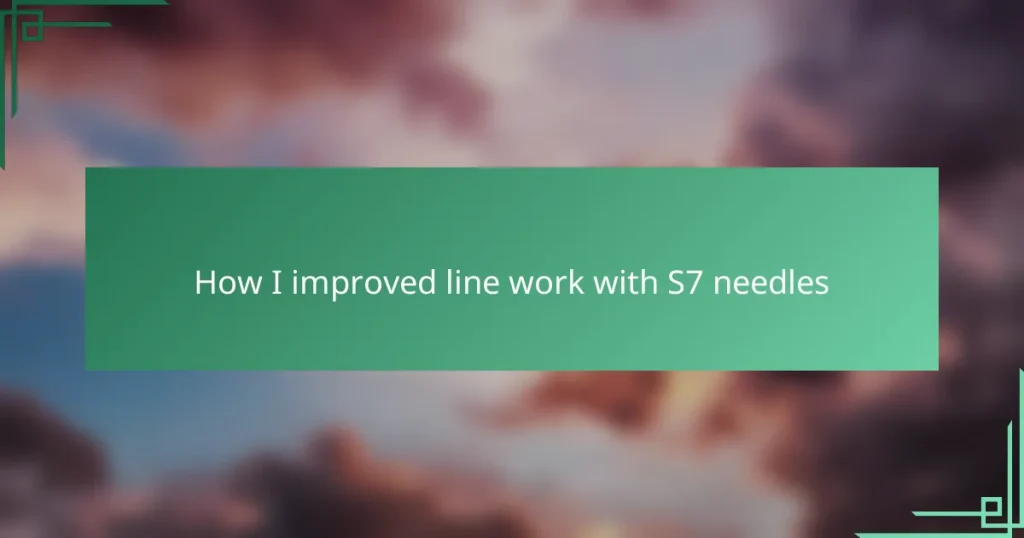Key takeaways
- Line work is crucial for tattoo quality, requiring precision and control to ensure clarity and longevity.
- S7 needles feature a unique configuration that provides clean, bold lines while minimizing skin trauma and user fatigue.
- Adjusting machine speed, needle angle, and applying consistent pressure are essential techniques for maximizing the effectiveness of S7 needles.
- Maintaining a calm approach, cleaning needles regularly, and finding the right depth are key to achieving optimal line work quality.

Understanding line work in tattoo art
Line work is the backbone of any tattoo design—it shapes the entire piece and dictates its clarity and impact. When I first started, I underestimated how much precision and control line work demands, often rushing through it only to regret the shaky results later. Have you ever wondered why some tattoos maintain their sharpness years down the line while others blur into a mess?
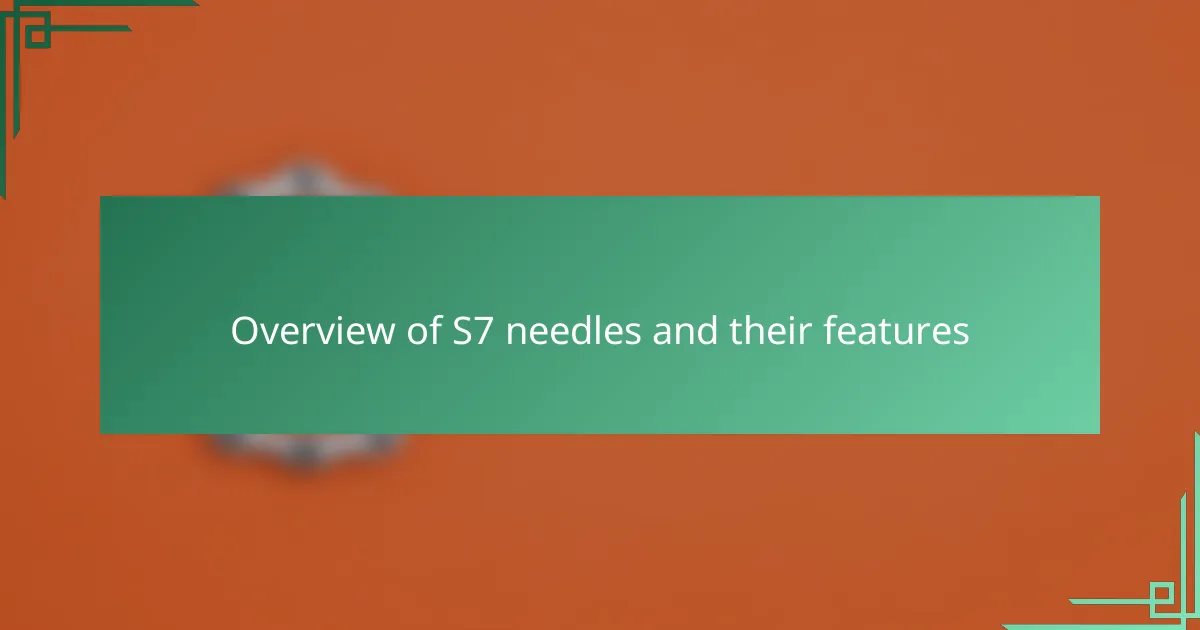
Overview of S7 needles and their features
S7 needles are known for their unique configuration—seven tightly grouped needles in a single round formation. I found this arrangement incredibly helpful for achieving crisp, consistent lines without the jagged edges that frustrated me for so long. Have you ever struggled with your lines looking uneven despite steady hands? That’s often due to the needle grouping, and S7’s design addresses this perfectly.
One feature I really appreciate about S7 needles is their balance between coverage and detail. They’re dense enough to deposit solid ink with one pass but still fine enough to handle intricate shapes. It’s like they offer the best of both worlds, which made me rethink how I approached shading and lining in my work.
Another thing that stood out to me was the needle’s flexibility paired with its rigidity. It sounds contradictory, but this means the needles glide smoothly on the skin without bouncing or skipping, yet hold their shape to maintain sharp lines. That subtle difference transformed my line work quality, making every tattoo I inked feel more professional and lasting.
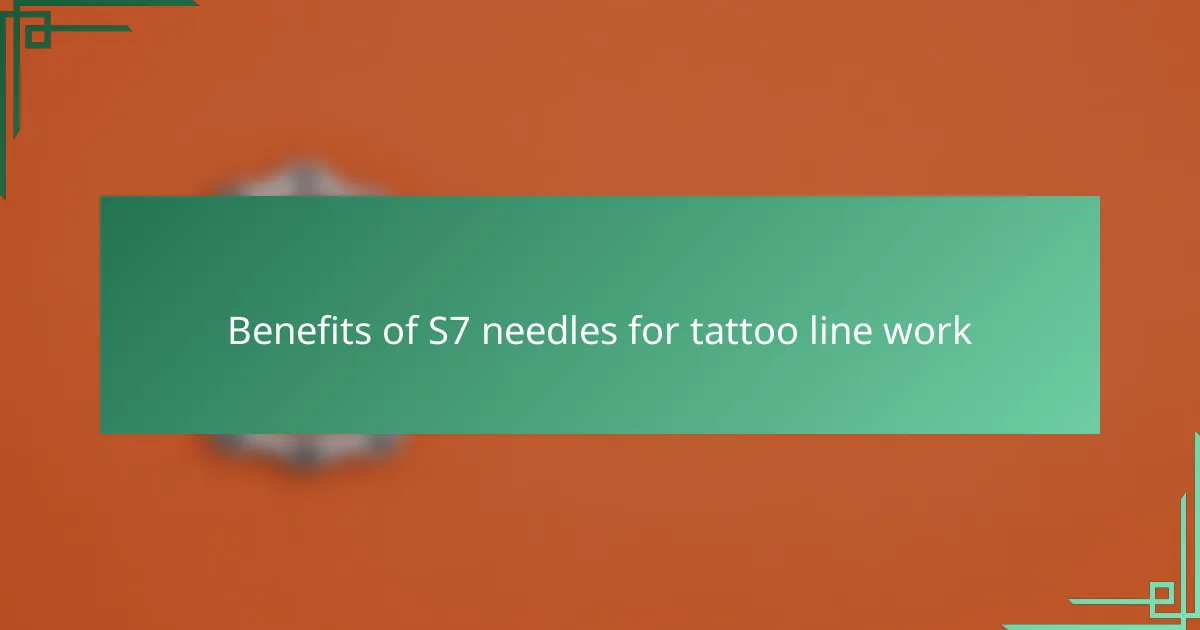
Benefits of S7 needles for tattoo line work
What I love most about S7 needles is how they consistently give me clean, bold lines that don’t fade or blur over time. It’s like they have a built-in promise of longevity for my tattoos, which makes me feel proud every time I look back at my older work. Have you ever had a tattoo that looked amazing on day one but lost its edge within months? That’s exactly what I wanted to avoid, and S7 needles helped me do just that.
Another unexpected benefit I discovered was the ease they brought to my workflow. Using S7 needles felt smoother and less tiring on my hand, which made long sessions less daunting. When your tools work with you, not against you, the entire process becomes more enjoyable—and the results speak for themselves.
The precision is what truly won me over, though. S7 needles allowed me to create intricate line patterns with confidence, knowing I could trust the needle’s stability. That trust translated into bolder creativity because I wasn’t second-guessing every stroke. Doesn’t that freedom to experiment make tattooing even more rewarding? For me, it absolutely did.
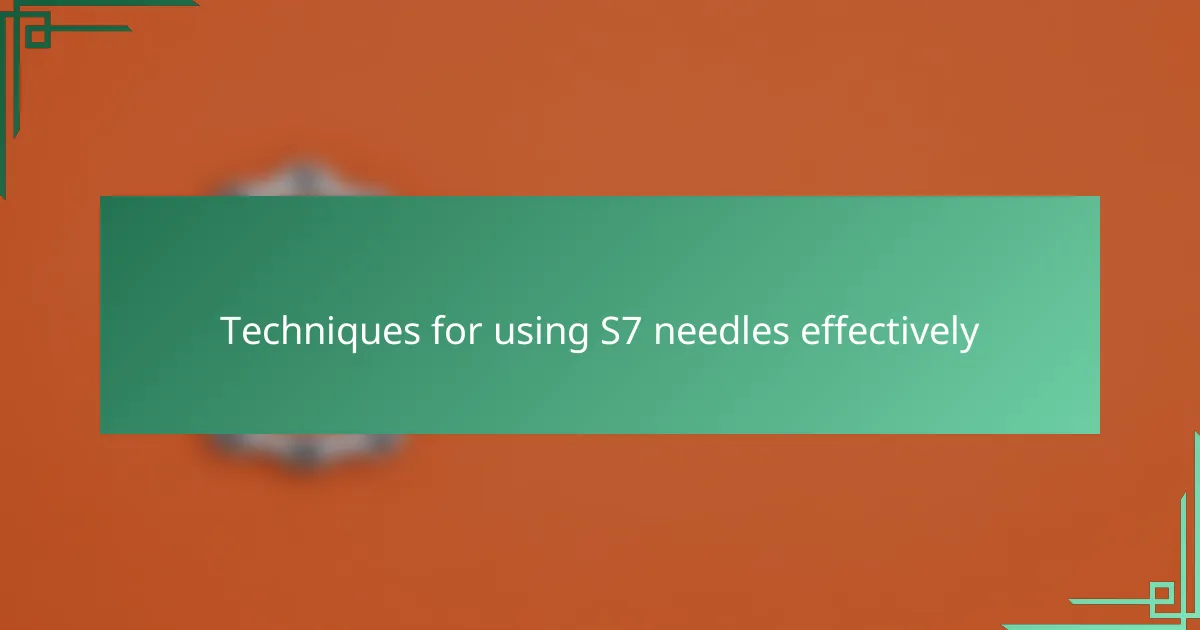
Techniques for using S7 needles effectively
One technique I found essential when working with S7 needles was adjusting my machine’s speed to match the needle’s density. At first, I kept my usual pace, but the lines came out heavier than I wanted. Slowing down slightly allowed the ink to settle evenly without over-saturating the skin, which made my lines much cleaner and more controlled.
I also realized that the angle at which I held the needle drastically affected the line quality. By keeping my machine at about a 45-degree tilt, I was able to let the needles glide smoothly, minimizing skin trauma and avoiding the dragging effect that had haunted me before. Have you ever noticed how small shifts in your hand position completely change the flow of your lines?
Finally, I made it a habit to practice consistent pressure throughout each stroke. In the past, I would unconsciously vary pressure, which caused uneven lines. With S7 needles, applying steady, moderate pressure helped me leverage their unique configuration to deliver bold, uniform line work every time. This consistency gave me a newfound confidence that really raised the bar on my tattoos.
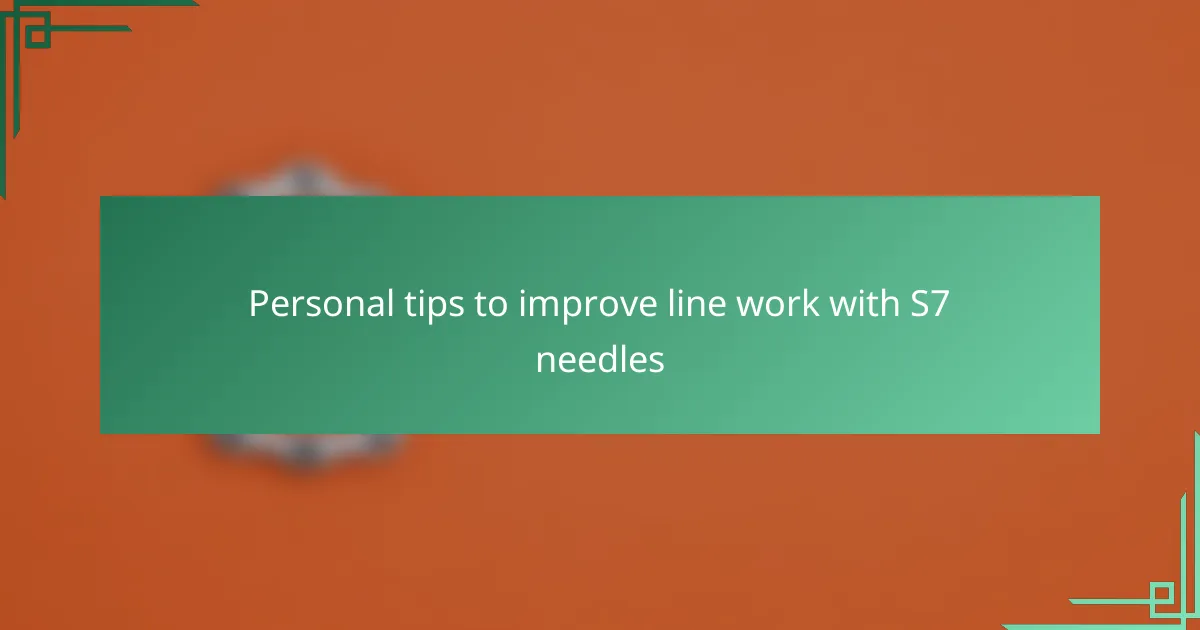
Personal tips to improve line work with S7 needles
One personal tip that truly transformed my line work with S7 needles was to focus intensely on my breathing and rhythm while tattooing. I used to rush through lines, which only led to shaky ink and frustration. Slowing down and syncing my hand movements with calm, steady breaths made my lines flow smoother—have you ever noticed how tension in your body creeps into your work?
I also found that cleaning the needle frequently during long sessions made a huge difference. Ink buildup can subtly dull the precision of S7 needles, and keeping them spotless ensured each line stayed as crisp as the first. This small habit might seem tedious, but the payoff in line clarity was absolutely worth it.
Lastly, I experimented with different needle depths before settling on the perfect [censured] level for my style. Too shallow and the lines were faint and patchy; too deep and the skin got irritated, causing unwanted blowouts. Finding that sweet spot took some trial and error, but once I dialed it in, my confidence soared, and my line work never looked better. Have you tried adjusting depth as a way to fine-tune your results? It’s a game changer.
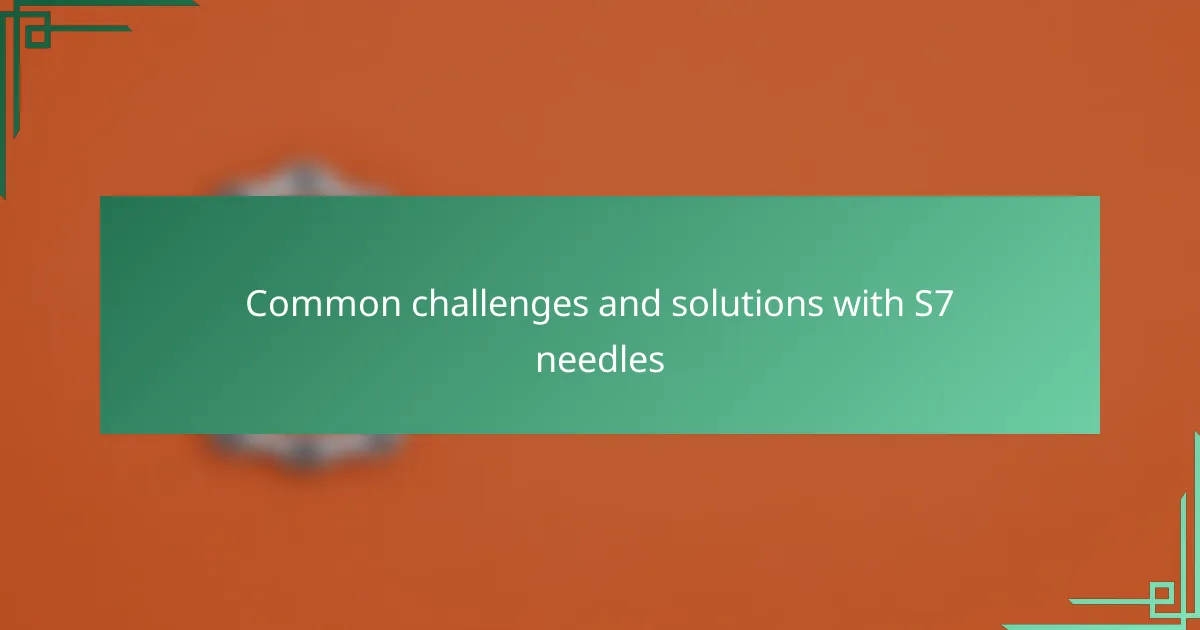
Common challenges and solutions with S7 needles
Working with S7 needles wasn’t without its hurdles. At first, I struggled with ink dispersion—sometimes the lines looked blotchy or inconsistent. I realized the key was adjusting my machine’s speed and needle depth precisely; rushing just didn’t cut it. Have you ever felt frustrated because your lines bleed or fade too quickly? Slowing down and paying close attention to needle pressure helped me tame that issue.
Another challenge popped up with needle buildup mid-session. Ink would clog between those seven needles, dulling line crispness without me noticing at first. When I started stopping regularly to clean the needle, the difference was night and day. That small routine shift became a secret weapon in maintaining consistent line quality.
Finally, controlling hand fatigue felt tricky during longer sessions, especially since impeccable line work demands steady, unwavering control. I noticed that the S7 needles respond best when I maintain a relaxed grip and steady pace rather than trying to force precision through tension. Have you ever thought tightening your grip might actually be sabotaging your work? Letting go a bit allowed my lines to breathe, and so did my hands.
